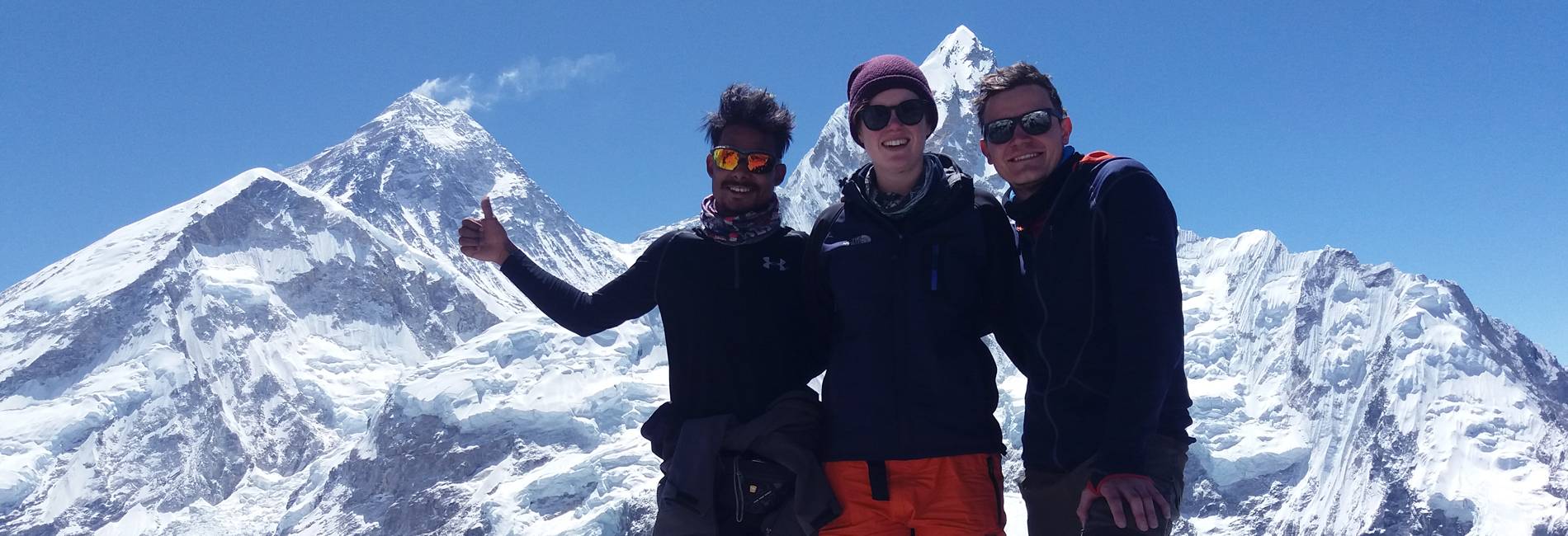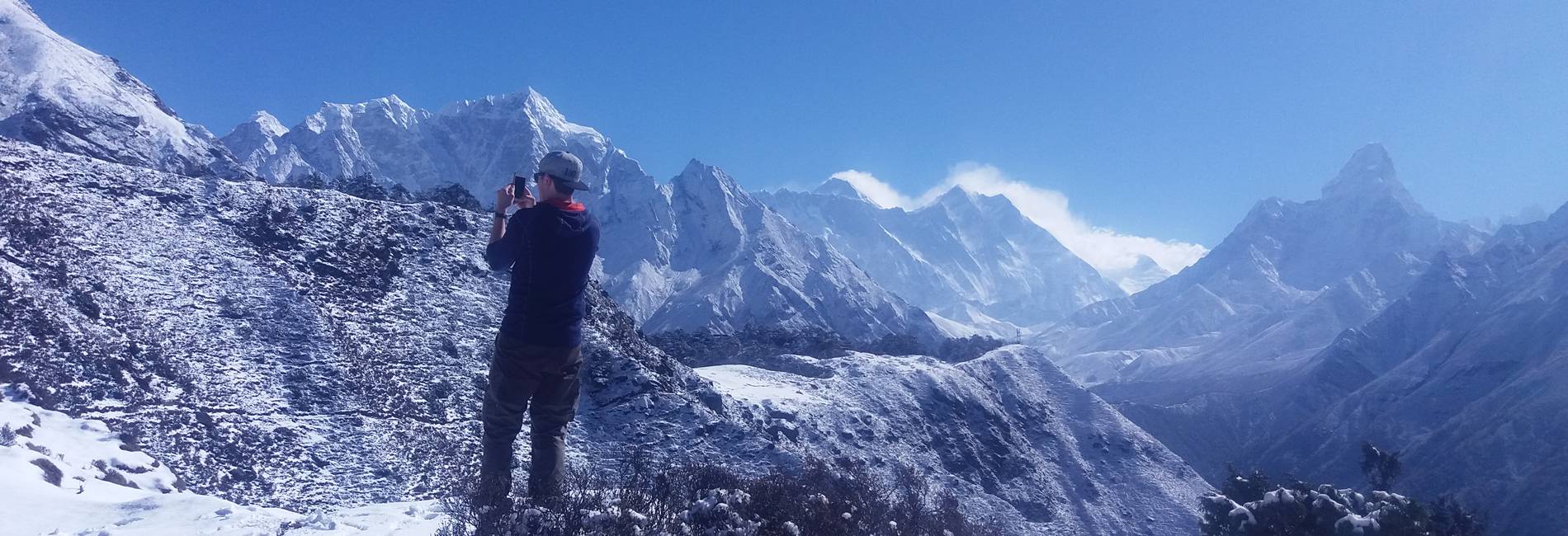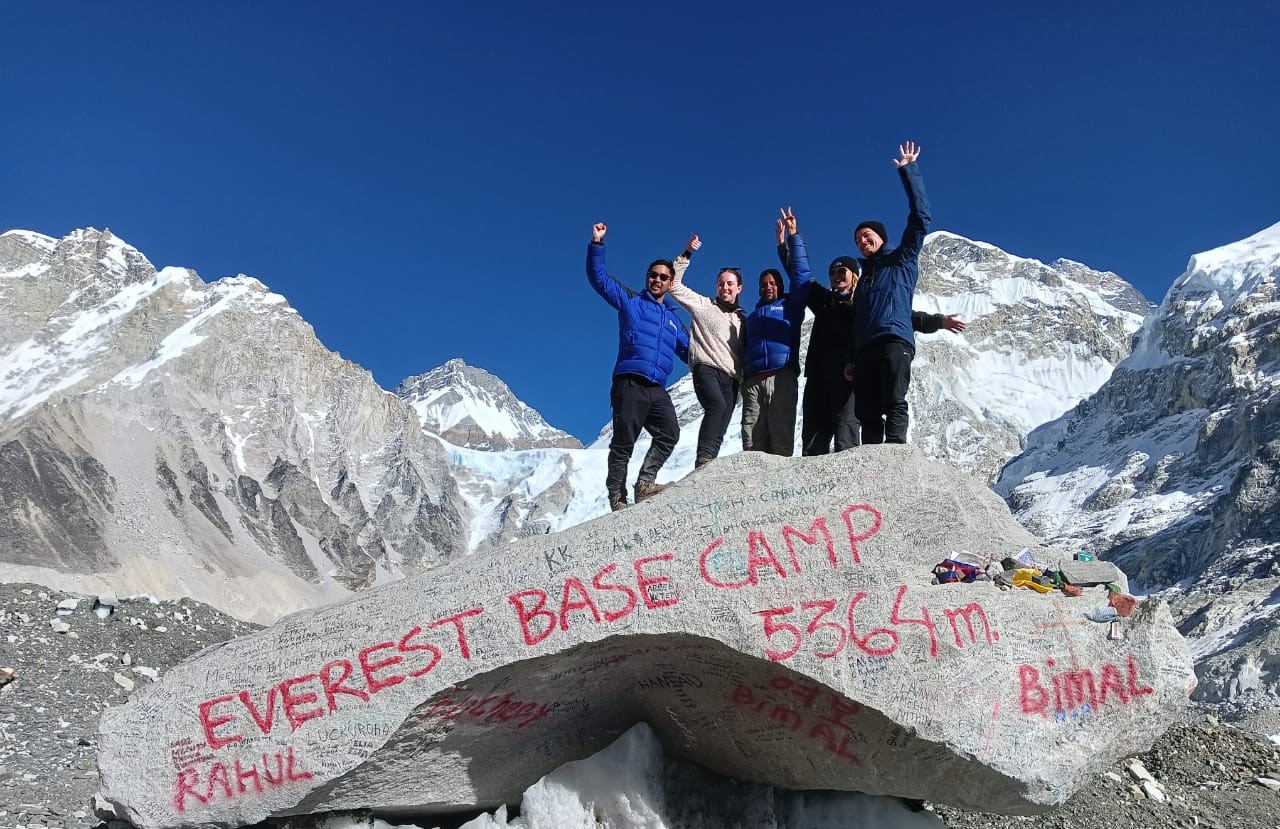26th August, 2025

Mar 20, 2024
Everest Base Camp Trek in July
Is it possible to register for and finish the climb to Everest Base Camp in July?
What is the weather like this month, and what are the benefits and drawbacks of undertaking the trek?
Continue reading to learn more about the July EBC trek.
In Nepal, July is the start of the monsoon season and is regarded as the off-season for trekking.
Because of this, the Everest Base Camp Trek routes are comparatively less congested at this time of year, which makes it a great choice for those seeking a calm trail.
Additionally, after a downpour, the views are at their sharpest; dawn light usually provides the best views.

EVEREST BASE CAMP TREK
Cross this off your “bucket list” – a “dream come true experience”Everest is the ultimate goal of many people and those who had already been there rating it as one of the best experiences of their liv...
In Nepal, the monsoon season brings with it mostly evening and nighttime rain rather than continuous daytime rain.
Most of the time, the days and mornings are sunny.
Positively, the rain clears the air of dust and weather, revealing a breathtaking vista of the Himalayan Mountains. Furthermore, the likelihood of rain diminishes as elevation rises above 3500 meters.
There are benefits to trekking to Everest Base Camp in July. Because it's off season, there are less crowds and fewer overbooked flights. Therefore, July can be an excellent month to trek to EBC for individuals who prefer to be alone.
All you have to do is factor in the monsoon and outfit and equip yourself appropriately.
Weather at Everest Base Camp in July
The monsoon season begins in mid-June and lasts through the following month. Although July is the wettest month in Nepal, it is usually mild despite the rain because it falls during the summer.
Since you won't have to brave the bitterly cold temperatures that are typical of the Himalayan region, the warmth at higher elevations can be enjoyable.
Moreover, the amount of precipitation usually decreases with elevation. Rainfall is rare in altitudes higher than 4,000 meters.
The temperature can reach a maximum of 17 degrees Celsius during the day and a minimum of minus 4/5 degrees Celsius at night.
For the nights and mornings of your July hike, a sleeping bag certified for negative 4/5 degrees Celsius might be suitable.
You might also ask the resort for an additional blanket if needed.

12 DAYS EVEREST BASE CAMP TREK
Once in a lifetime experience!A high altitude escapes to a culturally rich and fascinating region of the Himalayas.Trekking enthusiasts have been making this epic journey to Everest Base Camp sin...
The temperature at Everest Base Camp in July
| Place | Elevation | Avg.Temp | Min.Temp | Max.Temp |
| Lukla | 2840m | 14.7°C | 10°C | 18.4°C |
| Namche | 3440m | 11.7°C | 6.7°C | 17.7°C |
| Dingboche | 4460m | 7.9°C | 3.9°C | 13°C |
| Lobuche | 4900m | 6.1°C | 1.1°C | 11.2°C |
| Gorak Shep | 5180m | 5.3°C | 0.3°C | 10.3°C |
Advantages of Trekking in July
The following are some benefits of trekking to Everest Base Camp in July:
Less Trekkers
In July, there are less hikers on the trails than during peak seasons like spring and autumn. Because of this, you'll have the nature and tea houses to yourself, and the trails are comparatively empty.
Trekking in July is especially enjoyable if you like a quiet experience and detest crowds. Your mind and spirit can be rejuvenated by connecting with nature through the peaceful ambiance.
Breathtaking Scenery
There are usually no clouds in the mornings and days because it usually rains in the evening and at night. You may thus take in a breathtaking vista of the mountains.
July also has more greenery and cleaner air than other months. Along the walk, you may anticipate seeing stunning variety as well as a verdant forest with blossoming flowers and wild fruit, especially in lower altitude regions.
Off-season Discounts
The availability of off-season discounts is one advantage of hiking in July. There are a few cents less for flights, and lodging may be discounted as well.
While prices at teahouses and lodges are usually fixed, you can be eligible for certain complimentary amenities, such a bucket for hot showers or free phone charging, if you ask for them.

11 DAYS EVEREST BASE CAMP TREK
GOB-SMACKING BEAUTY - A TRUE HEAVEN-ON-EARTH EXPERIENCE. THINK BIG – DREAM BIG - THINK EVEREST. DON’T DREAM ABOUT IT - DO IT! This short 11-day trek to Everest Base Camp is big on adventure...
In addition, lodges have an easier time filling rooms during this month, and with fewer guests, the staff might be able to give more personalized attention.
Opportunity to Witness Festivals Like Saune Sankranti
Discovering the customs and culture of a foreign nation might make your travels even more fulfilling.
Traveling and taking in the locals' festivals might enhance your trip in a delightful way. Midway through July comes Saune Sankranti, which marks the beginning of the month of Shravan.
On this day, farmers wash off the muck after planting crops during the Nepalese calendar month of Asadh and feast on delectable food.
Difficulties of Everest Base Camp Trek in July
While there are advantages to trekking in July, there may also be distinct challenges to overcome.
Because it's the rainy season, insects are more active, therefore at the lower section of the EBC trek, you may encounter mosquitoes and leeches.
The paths may be muddy, slick, and wet. You must wear supportive footwear with enough grip and exercise caution when walking.
Clouds can obstruct views of the mountains when it rains for the majority of the day. Therefore, there may be days when your trip doesn't provide you with picturesque vistas.
Your scheduled itinerary may occasionally be disrupted by flight delays caused by inclement weather.
Tips for Trekking in July
Recognize the weather report:
During the monsoon, the weather can occasionally be very unexpected. Therefore, it's a good idea to stay informed about the daily weather report. In this manner, you can plan appropriately.
Keep insect repellant on hand:
Leeches and mosquitoes may accompany you in the lower altitudes during the monsoon. Therefore, always have a DEET (Diethyl Meta Toluamide)-containing anti-leech spray on hand.
You can also just sprinkle them with salt if you don't have that. You can use lavender oil or use lotion that repels mosquitoes.
Don't forget to periodically inspect your shoes, pants, and legs for leeches.
Trek ahead:
Usually, the nighttime brings rain. Thus, to prevent getting wet from rain, start and finish your hike early.
When you return to the teahouse in the evening, you can stay warm by having a hot cup of tea or by eating something like soup noodles.
Maintain a few days for leisure:
It's crucial to leave a few additional days so that you don't finish everything at once. In addition, inclement weather may cause flight delays.

EVEREST BASE CAMP TREK 7 DAYS
For those with an adventurous spirit and a need for a personal challenge to one of the world’s most spectacular places. The Everest Base Camp Trek gives you a great opportunity to explore a unique hig...
Additionally, the extra days will be useful when the weather obscures the vistas.
Packing List for Everest Base Camp Trek in July
Packing for the Everest Base Camp trek in July requires careful consideration due to the monsoon season. Here is a comprehensive packing list to ensure you are prepared for varying weather conditions and trail challenges:
Clothing:
1. Moisture-wicking base layers (tops and bottoms)
2. Insulating layers (fleece jackets, down jackets)
3. Waterproof and breathable outer layers (jacket and pants)
4. Quick-drying trekking pants
5. Long-sleeve and short-sleeve trekking shirts
6. Thermal underwear for colder nights
7. Warm hat and gloves
8. Sun hat or cap
9. Waterproof hiking boots
10. Extra pairs of hiking socks
Gear:
1. Backpack with rain cover
2. Sleeping bag suitable for low temperatures
3. Trekking poles for stability
4. Headlamp or flashlight with extra batteries
5. Water bottle or hydration system
6. Sunglasses with UV protection
7. Sunscreen and lip balm with high SPF
8. Personal toiletries and medications
9. First aid kit with essentials
10. Travel towel and toiletry kit
11. Lightweight trekking towel
Accessories:
1. Buff or scarf for neck protection
2. Camera or smartphone for capturing memories
3. Portable charger or power bank
4. Trekking map or guidebook
5. Waterproof dry bags for electronics
6. Energy snacks (nuts, energy bars)
7. Trekking journal and pen
Miscellaneous:
1. Passport and necessary permits
2. Cash (local currency and USD)
3. Travel insurance documents
4. Copy of emergency contacts and itinerary
5. Lightweight daypack for side trips
6. Plastic bags for organizing and waterproofing items
7. Portable water purification system or water purification tablets
Optional:
1. Gaiters for muddy trails
2. Down booties for cold nights
3. Binoculars for wildlife spotting
4. Lightweight camp shoes
5. Trekking umbrella for rain protection
Remember to pack light and efficiently, considering the weight restrictions for domestic flights to Lukla. Be prepared for rain, mud, and unpredictable weather conditions during the monsoon season in July. Adjust your packing list based on personal preferences and specific needs for a safe and enjoyable trek to Everest Base Camp.
Hiring a Guide or Porter in July
The value of employing a porter or guide—also referred to as Sherpas—cannot be overstated. There's a possibility of getting lost because the trails are frequently empty and occasionally obstructed by landslides.
Hiking to higher elevations can be dangerous, and there have been cases of visitors going missing. As a result, a guide may be highly useful in a variety of situations. These include guiding, pointing the way, teaching the culture, and—most importantly—calling for assistance in an emergency.
However, porters can assist you with carrying your bags, which will free up your hands to allow you to walk more steadily while carrying less weight.

GOKYO AND EVEREST BASE CAMP TREK
This 15-day package provides a stunning view of Everest & unforgettable beauty of the Gokyo Valley and its dazzling emerald blue lakes. The Himalayas of Nepal is without question a magic land...
Conclusion
In conclusion, the July Everest Base Camp climb includes advantages and disadvantages just like any other month. While some choose not to trek at all in July, others do so because of the excitement this month has to offer.
July trekking requires being prepared for everything. There may be abrupt changes in the weather and flight delays. But you can still have a blast if you prepare ahead of time and have the appropriate equipment.
July is a quiet month to hike because fewer people use the trails. The gorgeous surroundings are yours to appreciate without the throng. In addition, after the rain, everything is green and fresh.
Recall that it's critical to be adaptable and prepared for everything. You can enjoy an incredible trip to Everest Base Camp in July if you have the proper equipment and attitude.
Please inquire if you need assistance or if you have any questions. Regardless of when you go, we are here to help you on your trekking journey.
Any Questions? Let Us Know.
Recent Posts
17th June, 2025


















